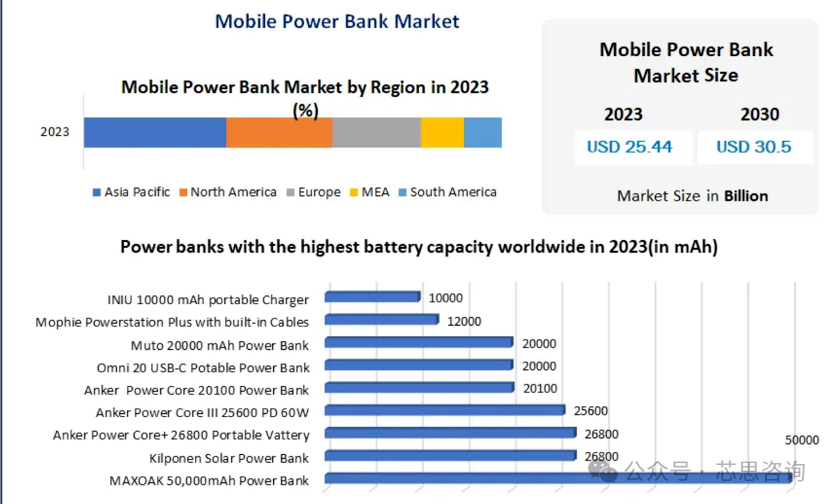ChipInvent Industry Insights: Power Bank Thermal Runaway Incident—Unpacking Cell Quality Risks, Mitigation, & Market Implications
A recent thermal runaway and explosion involving a branded portable power bank has been traced to critical hidden risks in cell materials: inconsistent nickel-cobalt-manganese (NCM) ratios in cathode materials, unstable tensile strength/thermal shrinkage of separators, and excessive metal contaminants in select batches. These material flaws are not isolated incidents—they triggered a cascading failure that culminated in the safety event. For consumer electronics manufacturers and semiconductor/electronics stakeholders, understanding the root mechanisms and technical mitigation strategies is imperative to safeguarding battery safety. At ChipInvent, we leverage deep cross-industry expertise to translate such incident insights into actionable risk-mitigation frameworks for our clients.

I. Degrading Cell Material Quality: The Root Cause of Thermal Runaway
As the backbone of battery performance and safety, cell material quality (cathode, anode, separator, electrolyte) directly dictates reliability. The power bank incident highlights a clear failure chain driven by material defects—one that ChipInvent helps clients proactively identify and address:
Step 1: Electrode Deformation & Lithium Plating
During charging/discharging, lithium-ion migration between cathode and anode causes repeated electrode expansion and contraction. Material inconsistencies—such as fluctuating nickel content in cathodes, uneven electrode coatings, or weak substrate strength—lead to electrode bending and cracking after cycles.
Simultaneously, low-reactivity anode materials or poor electrolyte compatibility hinder lithium-ion intercalation into the anode. Instead, ions precipitate as metallic lithium on the anode surface (“lithium plating”), forming needle-like “lithium dendrites.” These dendrites reduce capacity and pose a critical risk of piercing the separator—creating a precondition for short circuits.
Step 2: Separator Failure Amplifies Risk
The separator’s core role—isolating cathode/anode while enabling lithium-ion flow—is compromised by subpar quality. Insufficient tensile strength or excessive thermal shrinkage causes separators to tear (due to electrode deformation) or melt (at elevated temperatures), losing insulating capability. This allows dendrites to penetrate the separator, directly connecting cathode and anode.
Step 3: Internal Short Circuit & Thermal Runaway
Separator failure, dendrite penetration, or electrode contact triggers an internal short circuit. Instantaneous energy release spikes temperatures to hundreds of degrees Celsius, decomposing electrolytes (releasing flammable gases) and igniting electrodes—resulting in thermal runaway. In the power bank case, the confluence of multiple material defects accelerated this process, underscoring the need for holistic quality controls.
II. High-Risk Operational Scenarios: Prioritizing Risk Assessment
Thermal runaway is not random—it correlates strongly with battery operating states. ChipInvent’s analysis prioritizes risk tiers for client safety planning:
1. Charging & Discharging (Fast Charging/Overcharging as High-Priority Risks)
Electrode deformation and lithium plating stem from abnormal ion migration—only active during charging/discharging. Fast charging accelerates ion movement; material defects (e.g., poor intercalation) drastically increase lithium plating risk. Overcharging forces excess ions into the anode, escalating dendrite growth.
In contrast, idle batteries see no new ion migration—risks are limited to pre-existing flaws (e.g., prior dendrite formation).
2. Fully Charged Idle State (High SOC)
At high state of charge (SOC), the anode is nearly saturated with lithium ions, causing maximum volume expansion. This exerts extreme mechanical stress on electrodes/separators, worsening deformation or separator wear. Fully charged batteries also have peak energy density—any short circuit releases more energy, leading to more severe thermal runaway.
3. Low-Charge Idle State (Low SOC)
At low SOC, the anode contains minimal lithium ions and shrinks in volume. Stress on components is minimized, and even minor dendrites pose limited risk—short circuits release far less energy, reducing hazard severity.
III. ChipInvent’s Risk Mitigation Framework: From Controls to Intelligent Optimization
To address material-driven risks, ChipInvent advocates a “standards + technology” dual approach—aligned with our client’s goals of balancing safety, performance, and cost. Our recommendations draw on semiconductor/electronics supply chain expertise:
1. Rigorous Charging/Discharging Protocol Enforcement
2. Intelligent BMS Upgrades: From Passive Protection to Active Risk Mitigation
Traditional BMS only provides basic safeguards (e.g., circuit cutoff for overheating). ChipInvent helps clients adopt AI-enhanced BMS to address early-stage material defects—critical for proactive safety:
Why This Matters for Your Business
For semiconductor, consumer electronics, and battery manufacturers, thermal runaway incidents are not just safety crises—they risk brand reputation and market trust. ChipInvent’s analysis turns these incidents into actionable insights: we help clients audit cell material quality, optimize BMS performance, and design risk-mitigation strategies tailored to their product portfolios.
With expertise in semiconductor supply chains, material science, and intelligent electronics systems, ChipInvent is your partner in building safer, more reliable battery-powered products. Contact our team to learn how we can strengthen your battery safety framework.
